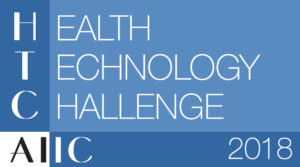Autori »
Lista completa degli autori
Area tematica
Progettazione funzionale
Abstract
BACKGROUND: Videosurgery represents a valuable tool to deliver high quality training to young doctors and students, as well as to discuss complex clinical cases and provide excellent surgical education. However, in many cases similar benefits are limited by the costs due to the outstanding hardware resources and optimal infrastructure required.
OBJECTIVES: The aims of this study were to:
1 provide a novel protocol that can overcome problems related to the high initial cost of both hardware equipment and expertise needed. The new interface is based on a purpose created network environment capable to interact with smartphones and tablets, whose ubiquitous presence does not require any particular training.
2 Support the simultaneous transmissions of multiple visual channels, including synchronous views of the operating field, one view for virtual surgical planning, one view for teaching purposes
3 Adopting a modular architecture that amplifies the distance of transmission on the basis of the wireless infrastructure (department, academic hospital, city, region), thereby permitting visual content distance delivery without any quality loss.
MATERIALS AND METHODS: A purpose-created wifi network served as interface to connect two smartphones and one tablet to a visualisation platform represented by an interactive whiteboard (IWB). The same devices allowed to record the whole surgery. Two laptops were simultaneously connected to IWB in order to display live virtual surgical planning and surgical steps. The system was set during nine operations and a sample of 10 students for each procedure was chosen to evaluate the impact of distance telementoring on their learning performance.
RESULTS: The interface has been successfully tested in all surgeries without any quality loss for their whole duration. High resolution and fluidity were confirmed in the recorded clips as well. Only minor issues occurred, mostly related to the incorrect position of cameras in the operating theatre. The impact of telementoring system was assessed by groups of 10 students for each procedure who were administered a questionnaire, and a total satisfaction index of 9/10 was achieved.
CONCLUSIONS: SEF protocol appeared to be a stable and highly customisable interface and has the potential to empower many centres with telehealth systems, not always economically accessible. More testing is required, especially to broaden the distance of transmission, but initial results are deeply encouraging.
Autori
Alessandro Tel maxillofacial surgery department, academic hospital of udine, department of medical science, university of udine udine italy
Federico Bortuzzo maxillofacial surgery department, academic hospital of udine, department of medical science, university of udine udine italy
Massimo Robiony maxillofacial surgery department, academic hospital of udine, department of medical science, university of udine udine italy
Piero Pascolo information technology and communication department, academic hospital of udine, department of medical science, university of udine udine italy

